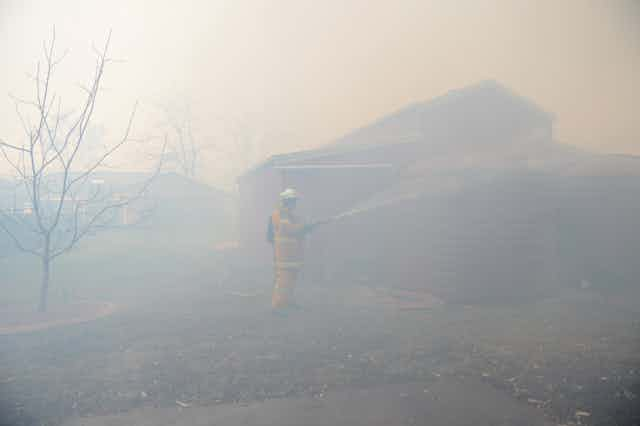Australia is a harsh and volatile environment, subject to extremes of fire and flood. We’ve just seen a particularly early start to the bushfire season, with over 60 fires burning and at least two homes destroyed in Sydney. These fires match predictions of increasingly long fire seasons, and trends towards higher temperatures and decreased rainfall.
Every natural disaster raises the issue of home insurance - who pays, and who doesn’t have it. But this discussion misses what’s really going on.
Extreme weather is on the rise thanks to climate change. It’s one of the factors behind rises in insurance premiums, a cause for public concern. But instead of worrying about price hikes we should be reading the signs.
The latest natural disasters continue to affect home insurance premiums, which are again set to rise. Suncorp, which owns GIO and AAMI and is the biggest home insurer across the nation, has recently identified key factors for its ongoing price hikes. They include the unexpected high costs of rebuilding what are very large Australian homes, as well as a spate of extreme events including the catastrophic 2011 Queensland floods.
More frequent and more intense weather events are expected with climate change. Internationally the insurance industry’s big re-insurers anticipate having to recoup higher pay-outs by raising premiums.
Insurance is about risk reduction as well as risk sharing. Insurance with its various levels of premium identifies and prices that risk. It can provide an [incentive or disincentive](http://www.ga.gov.au/hazards.html](http://www.ga.gov.au/hazards.html) for home-owners to change their behaviour, and live more safely in an Australian environment that is sometimes very dangerous.
So, rather than just wanting to resist and reject rising premiums we would do well to pay attention and read them carefully.
Research funded through the National Climate Change Adaptation Research Facility has examined how planning, building and insuring might figure in our adaptation to more extreme weather events in the future.
Of those people living in very big houses with lots of material belongings and located in high risk areas such as fire-prone bushland or waterside settings, some will accept the higher premiums to retain a particular lifestyle. For most Australians insurance allows a home to be replaced after a disaster – often on a “like-for-like” basis – and is what allows life to carry on as usual.
Alternatively, we could decide as individuals and as communities to try and change how we live. Insurance could guide improvements in where housing is built, its size and design, and the use of better materials. New dwellings could be small and compact, built to suit the environment, situated away from floodplains and north-facing slopes in flammable bushland, and using more resistant or cheap and easily-replaced materials.
The availability and cost of insurance should become one of the accepted signals to prospective home-buyers indicating whether or not existing housing stock meets the requirements for this more resilient future. Where insurers fear to tread, so too local governments, planners, developers and builders as well as home-buyers should be wary of entering. Communities in high-risk and insurable areas might in turn be encouraged to retreat to wholly new locations.
But what about people who can’t afford insurance or to move to safer ground? Research funded by the Australian Housing and Urban Research Institute shows that people in social housing are some of society’s most marginalised and therefore especially vulnerable to natural disasters. Tenants of public housing affected by cyclones, bushfires and floods rarely hold insurance.
Poor housing in disaster-prone areas will remain home to the least well-off members of society. Perhaps the notion of “climate change ghettoes” will be added to the litany of forms that currently identify places of disadvantage in Australia.
The government continues to play a key role as the insurer of last resort, particularly for vulnerable and marginalised households. But proponents of insurance revile such interventions. Insurance proponents say these measures distort the market mechanism that prices disasters, contributing to “moral hazard”, or poor choices given the possible turn to a government handout.
It is hard to deny people in crisis access to assistance from governments and communities. However the use of scarce resources to reinstate households and townships unthinkingly back in the line of fire squanders any opportunity to learn from these events.
The solution may be critical relationships that bring together the different players involved in insurance, housing provision, climate adaptation and disaster management.
They will be required to work together with various stakeholders in bravely and innovatively deciding how and where we redesign and build more resilient Australian communities. The plan to relocate homes in the ravaged township of Grantham in the Lockyer Valley is an Australian first and exemplary of how such initiatives might work through land-swaps.
There will be an uncomfortable period of transition; communities in urban areas have an inertia to them that means change is slow. Even as new safe havens pop up, they will not be available to everyone immediately. Weathering our climate change future will require a response that involves all Australians.

